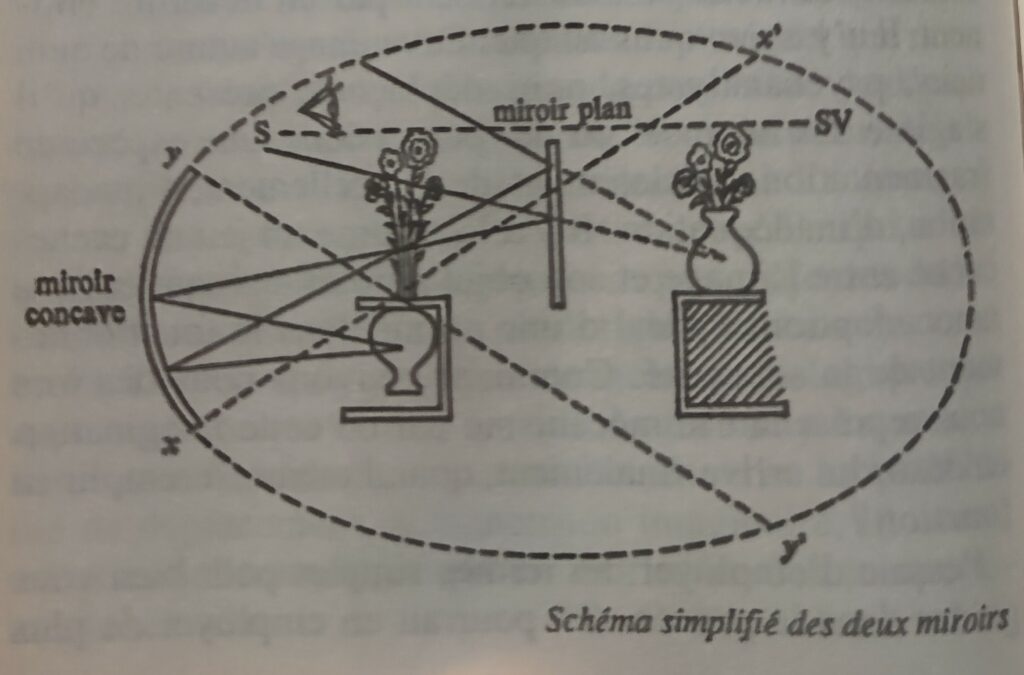The specular ego is an illusion in the shape of an ideal-ego, a grandiose narcissistic ego, indispensable for the constitution of the ego, and which allows a narcissistic triumph – a jubilation – following a (presumed) concordance of the ego and the ideal-ego. Since such a recognition rests on a misrecognition, Lacan speaks about the “imaginary ego” (Lacan, 1948): to recognize oneself is at the same time to misrecognize oneself: the child does not see himself in the mirror but only his image reflected – and glorified – by the gaze of the adult. For this reason, according to Lacan, the ego can only be an ideal-ego: the mirror gives to the child the image of an integrated body and of its control, which camouflages its Hilflosigkeit (distress/dependence, “desaide”).
Le moi spéculaire est une illusion en forme d’un moi-idéal, un soi narcissique grandiose, indispensable pour la constitution du moi, et qui permet un triomphe narcissique – une jubilation – à la suite d’une concordance (présumée) du moi et du Moi-Idéal. Puisqu’une telle reconnaissance repose sur une méconnaissance, Lacan parle du « moi imaginaire » (Lacan, 1948) : se reconnaître est en même temps se méconnaître : l’enfant ne se voit pas soi dans le miroir mais seulement son image reflété – et glorifiée – par le regard de l’adulte. Pour cette raison, selon Lacan, le moi ne peut être qu’un moi-idéal : le miroir donne à l’enfant l’image d’un corps intégré et de sa maîtrise, ce qui camoufle sa Hilflosigkeit (détresse/dépendance, « desaide »).
Susann HEENEN-WOLFF, « L’identité de genre – une approche métapsychologique », Cahiers de psychologie clinique, 2022/2 (n° 59), p. 31-51
DOI : 10.3917/cpc.059.0031.
URL : https://www.cairn.info/revue-cahiers-de-psychologie-clinique-2022-2-page-31.htm
